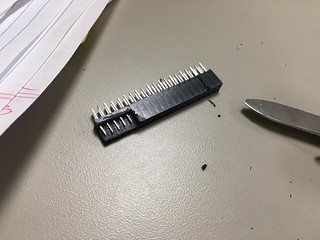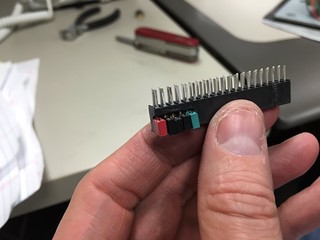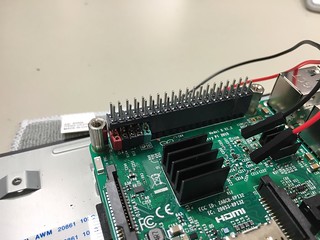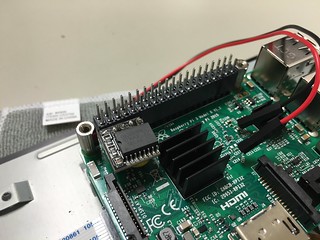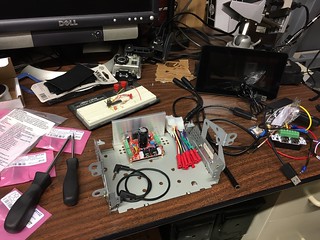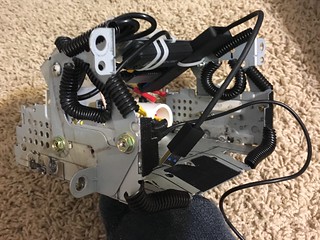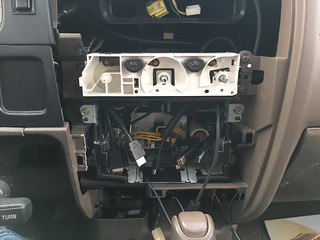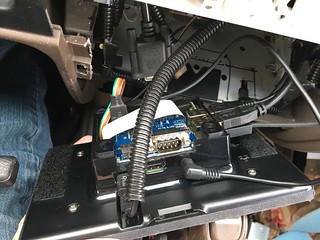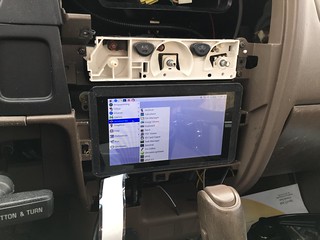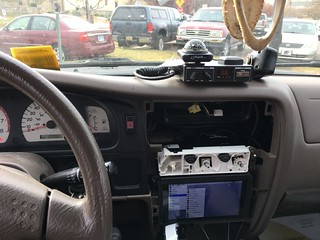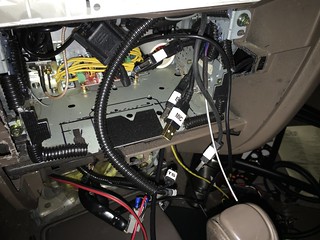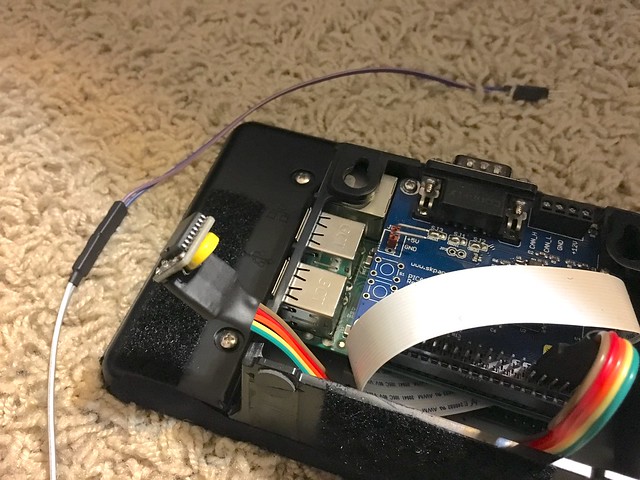
^ Here's what the RTC arrangement looks like now. I used a ribbon-cable jumper set and heatshrinked the ends together, then hot glued them lightly at both ends to hold them in place. The RTC clock was tucked away in the case and is taped by the IC to its wall via 3M double-sided tape.
The cable just in view orbiting the Pi is a hack I'm both embarrassed by and proud of. It's two ribbon jumpers stacked on top of two ribbon jumpers stacked on top of two ribbon jumpers. I had a pile of old Radio Shack resistors that haven't been used in 20 years of owning them, so I chopped the legs and fed them between each jumper, then used heatshrink to hold them together. The end result is a long extension cable for GPIO shutdown. When power is cut from the Mausberry unit, power is diverted from always-on battery power, a script is called, magic tasks happen, and the Pi shuts down. At first, that's exactly what it will do, but in the future I hope to sync fresh logs, firmware updates/dumps, and Ultimate Tools updates with Dropbox prior to shutdown. That capability alone justifies all this fuss, but I plan to do a lot more (tuning, weather, shortwave audio, YouTube, LiDAR mapping, GPS navigation, voice assistance, bluetooth telephone, etc.).

^ First audio test and...it works! Not bad considering all the wiring is yellow, it was done while on the job, and I entirely relied on the harness' "wiring diagram according to most Toyotas" claim. My fears were confirmed, however, that the two audio jacks were each mono for left/right channels. That's a pain because I'm one ideal cable short and all my splitters and converters arrange in ways that don't fit. Still, very exciting to hear music pumping away agreeably at 50% from my iPhone. Here's the song that was readily available:

^ This song never sounded better than hearing it on my own hardware.
With the test successful, even without the proper audio cabling I can install the cage and guts permanently. If any cables have to run over the metal edges, I'll consider hotgluing a split cable's insulation across the edge so the machined metal can't saw away at anything. As for the heatsink, it wasn't warm to the touch after one song played with gusto, so I don't anticipate having to install any fire retardant foam or shielding so long as the cables are run carefully.
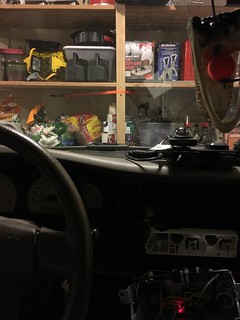
^ For context, the view from the cab during testing.
